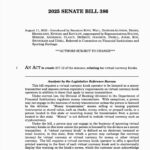Regulatory Momentum Boosts US Crypto Adoption
According to Chainalysis, developments in Washington regarding regulations and the rise of crypto exchange-traded funds have propelled the United States up two positions to become the second in crypto adoption.
The US now ranks just behind India, which has maintained the top position for a third consecutive year, further contributing to the Asia Pacific region being recognized as the fastest-growing between July 2024 and June 2025, as outlined in Chainalysis’ 2025 Global Adoption Index released on Wednesday.
Kim Grauer, chief economist at Chainalysis, shared that crypto adoption is primarily advancing in established markets with clearer regulations and institutional frameworks, as well as in emerging markets where stablecoins are altering the way people handle their finances.
Pakistan was one of the most significant movers, advancing six spots to secure the third position, while Vietnam and Brazil completed the top five.
Nigeria fell from second to sixth place despite achieving some regulatory improvements over the past year, with Indonesia, Ukraine, the Philippines, and Russia rounding out the top ten.
The overall rankings considered four subindexes that evaluated the crypto value received from retail and institutional participants through both centralized and decentralized services.
The US climbed from fourth place in Chainalysis’ previous report to second due to the growing adoption of spot Bitcoin (BTC) ETFs and clearer regulations that have legitimized crypto within traditional finance.
“Regulatory clarity is particularly important for large corporates and traditional financial institutions, for whom compliance, legal and reputational considerations tend to rank highly,” Grauer emphasized.
According to data from Farside Investors, US spot Bitcoin ETFs have attracted $54.5 billion in inflows since their launch last January, with the majority occurring between last June and this past July.
In addition, investment advisers and hedge funds began to significantly accumulate spot Ether (ETH) ETFs during the second quarter, purchasing $1.3 billion and $687 million, respectively, as reported by Bloomberg late last month.
Despite facing regulatory challenges in recent years, India topped all four subindexes, driven in part by its tech-savvy population and a large diaspora that makes the country a key destination for crypto remittance payments.
“Grassroots crypto adoption will tend to follow where these real-world needs exist and are pressing, even where regulatory conditions are not facilitative,” Grauer noted.
Growth Trends in the Asia-Pacific Region
The Asia-Pacific region experienced significant year-on-year growth, with the total value received increasing by 69% to $2.36 trillion, led by India, Pakistan, and Vietnam, while the Philippines, South Korea, and Thailand also appeared in the top 20.
Growth in Latin America surged by 10%, “reinforcing the region’s trajectory as one of crypto’s fastest-growing hubs,” Chainalysis stated in the report, which highlighted Brazil and Argentina’s presence in the top 20.
When analyzing adoption on a per-capita basis, the Chainalysis rankings reveal a different landscape, with Eastern European nations Ukraine, Moldova, and Georgia leading the list.
Other countries in the region that made it into the top 20 included Latvia, Montenegro, Slovenia, Estonia, and Belarus.
Chainalysis attributed this high per-capita adoption to a combination of economic uncertainty, diminished trust in the banking system, and a strong level of technical literacy within the region.
Dominance of Bitcoin in Crypto Market
Bitcoin continues to serve as the primary entry point into crypto, representing more than $4.6 trillion in fiat inflows, according to Chainalysis findings.
The next category comprised layer 1 tokens, excluding Bitcoin and Ether, which also surpassed $4 trillion, while stablecoins came in a distant third at just under $1 trillion.
Memecoins accounted for roughly a quarter of a trillion dollars in inflows over the same period.
The US led with $4.2 trillion in on-ramp volume, followed by South Korea at $1 trillion. Notably, Bitcoin’s share was particularly strong in the UK and the EU, where nearly half of fiat purchases were made with Bitcoin.



















